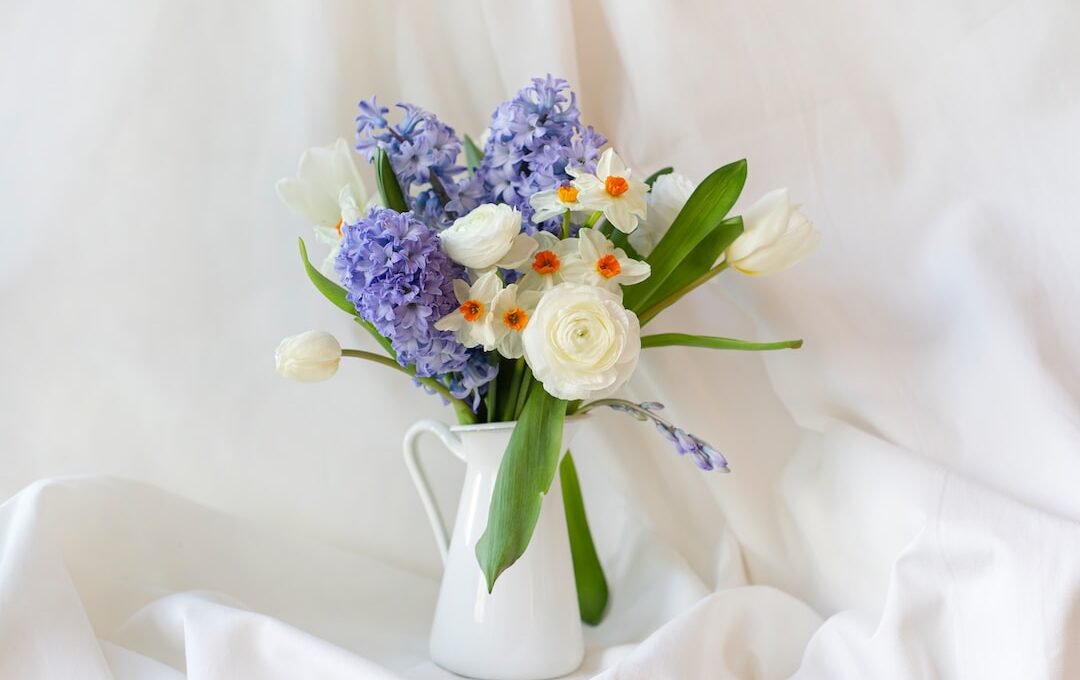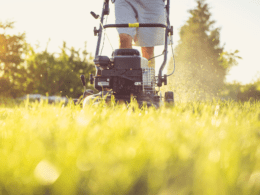Are you wondering how long your potted hyacinths will last? Well, fear not, because we have all the information you need to ensure their longevity!
Potted hyacinths can bring beauty and fragrance to your home, but their blooming period can vary. Factors such as temperature, light, and care can affect how long they last.
In this article, we will explore the lifespan of potted hyacinths, the factors that influence their blooming period, and how you can extend their beauty. We will also discuss the signs that indicate your hyacinths are fading and provide tips for prolonging their life.
Additionally, we will guide you on when to repot or dispose of potted hyacinths and offer creative ways to reuse them.
So, let’s dive in and learn how to make your potted hyacinths thrive and last as long as possible!
Quick Summary
- Potted hyacinths can last 2-6 weeks with proper care
- Adequate sunlight and warmth are important for their growth
- Water regularly and fertilize every 2-3 weeks
- Repot hyacinths every 2-3 years to prevent cramped roots and stunted growth
Lifespan of Potted Hyacinths
So, how long do potted hyacinths last for you?
Well, the lifespan of potted hyacinths can vary depending on several factors. One important factor is the care and maintenance you provide for your plants. Hyacinths need proper watering, sunlight, and fertilization to thrive. Overwatering can lead to rotting of the bulbs, while insufficient watering can cause dehydration. Finding the right balance is crucial for their longevity.
Another factor that affects the lifespan of potted hyacinths is the environment they are placed in. These beautiful flowers prefer cool temperatures, ideally around 60 to 70 degrees Fahrenheit. Avoid exposing them to extreme heat or cold, as it can shorten their lifespan. Keep them away from drafts and direct sunlight, as these can also cause their flowers to fade quickly.
Speaking of signs of fading, it’s important to keep an eye out for certain indicators. If the hyacinth leaves start turning yellow or brown, it’s a sign that something is wrong. It could be a lack of nutrients or too much water. Similarly, if the flowers start wilting or falling off prematurely, it’s a clear sign that the hyacinth is not doing well.
By following these tips and providing the right care, your potted hyacinths can last anywhere from two to six weeks, ensuring you can enjoy their vibrant beauty for as long as possible. Take good care of them, and they’ll reward you with their delightful presence.
Factors that Affect their Blooming Period
When it comes to the blooming period of potted hyacinths, there are several factors that can influence their longevity. First, temperature and light conditions play a crucial role in their growth and flowering.
Second, proper watering and fertilizing are essential for maintaining healthy plants and encouraging blooming.
Lastly, providing the right care and maintenance, such as removing dead flowers and addressing any pest or disease issues, can help prolong the blooming period of potted hyacinths.
Temperature and Light Conditions
Potted hyacinths thrive in environments with consistent warmth and ample sunlight, allowing them to last for an extended period of time. To ensure their longevity, it’s important to maintain optimal temperature and light conditions.
Keep your potted hyacinth in a room with a temperature between 60 and 70 degrees Fahrenheit, avoiding extreme heat or cold. Adequate sunlight is crucial, so place your hyacinth near a window that receives bright, indirect light for at least six hours a day.
Additionally, monitor humidity levels and provide proper drainage to prevent waterlogging, as excessive moisture can lead to root rot. Remember, maintaining a safe and comfortable environment for your potted hyacinths will contribute to their lasting beauty and fragrance.
Watering and Fertilizing
Remember to water your potted hyacinths regularly, ensuring the soil is moist but not soggy, and fertilize them every two to three weeks to promote healthy growth and vibrant blooms.
To maintain the right watering frequency, it’s important to check the moisture level of the soil by inserting your finger about an inch deep. If the soil feels dry, it’s time to water.
When it comes to fertilizers, opt for organic options that are safe for both you and the environment. Slow-release granular fertilizers or liquid fertilizers diluted to half strength are good choices. Avoid over-fertilizing as it can lead to burnt roots and stunted growth.
Remember to read the instructions carefully before applying any fertilizer to ensure the safety of your hyacinths.
Proper Care and Maintenance
Take the time to properly care for and maintain your hyacinths to ensure they thrive and bring beauty to your home.
One important aspect of caring for potted hyacinths is preventing root rot. To do this, you need to choose the right pot size. A pot that’s too small can lead to overcrowding of the roots, which increases the chances of root rot. Opt for a pot that allows for proper drainage and enough space for the roots to grow.
Additionally, make sure to water your hyacinths correctly. Overwatering can also contribute to root rot. Only water when the top inch of soil feels dry to the touch.
By taking these precautions, you can help your potted hyacinths last longer and stay healthy.
How to Extend the Blooming Period
To extend the blooming period of your potted hyacinths, there are a few key points to keep in mind.
First, deadhead and remove faded flowers regularly to encourage new blooms.
Second, make sure to provide adequate water and nutrients to keep the plant healthy.
Finally, keep the plant in a cool environment to prevent it from overheating and wilting.
Deadheading and Removing Faded Flowers
Once the vibrant blooms on your potted hyacinths start to fade, it’s time for you to get rid of them to ensure the longevity of your plant. Deadheading, or removing the faded flowers, is essential for promoting the health and beauty of your hyacinths. By doing this, you encourage the plant to redirect its energy towards producing new blooms instead of wasting it on seed production. Deadheading also prevents the plant from self-seeding and potentially becoming invasive in your garden. To deadhead your hyacinths, simply use clean, sharp pruning shears to cut the faded flowers off at the base of their stems. Dispose of the removed flowers and any fallen petals to avoid attracting pests or diseases. Remember to wear gloves and eye protection for your safety.
| Pruning Techniques | Benefits of Deadheading | ||
|---|---|---|---|
| Use clean, sharp pruning shears | Promotes new blooms | ||
| Cut faded flowers at the base of stems | Prevents self-seeding | ||
| Dispose of removed flowers and fallen petals | Avoids pests and diseases | ||
| Wear gloves and eye protection | Ensures safety during the process | ||
| Redirects plant’s energy for new growth | Encourages plant’s health and beauty | Promotes the development of stronger and more vibrant blooms. |
Providing Adequate Water and Nutrients
Make sure you’re giving your hyacinths the proper care they need by providing them with adequate water and nutrients.
Hyacinths grown in pots require specific watering techniques to thrive. It’s essential to keep the soil consistently moist but not waterlogged. Water your hyacinths deeply, allowing the excess water to drain out of the bottom of the pot. Avoid overwatering, as it can lead to root rot and other issues.
Additionally, be mindful of nutrient deficiencies that can affect the health of your hyacinths. Fertilize your plants regularly with a balanced, water-soluble fertilizer to ensure they receive the necessary nutrients. Look out for signs of yellowing leaves or stunted growth, as these can indicate nutrient deficiencies.
By following these guidelines, you’ll help your potted hyacinths last longer and thrive.
Keeping the Plant in a Cool Environment
Keeping the plant in a cool environment ensures that your hyacinths will thrive and stay healthy. Indoor gardening has numerous benefits, and maintaining a cool temperature is crucial for the well-being of your potted hyacinths. Here are some key points to remember:
- Lower temperatures help prevent the plant from wilting and drying out.
- Cooler environments slow down the growth rate, allowing the hyacinths to bloom longer.
- Adequate air circulation is essential to prevent the buildup of moisture, which can lead to fungal diseases.
By providing a cool environment, you’re creating a safe and ideal condition for your hyacinths to flourish. Remember to place them away from direct heat sources and keep the room temperature between 60-65°F (15-18°C). With proper care and attention, your potted hyacinths will last longer and bring beauty to your indoor space.
Signs that your Hyacinths are Fading
Notice the subtle changes in your potted hyacinths as they start to fade, reminding you to cherish every fragrant blossom while it lasts. As your hyacinths begin to fade, it’s important to take steps to extend their lifespan and preserve their beauty.
By following these simple tips, you can ensure that your fading hyacinths stay healthy and vibrant for as long as possible.
First, make sure to keep your hyacinths in a cool environment. Excessive heat can cause the flowers to wilt and fade more quickly. Place them in a location away from direct sunlight and keep the temperature around 60-65 degrees Fahrenheit. This will help to prolong their blooming period.
Second, keep a close eye on your hyacinths for signs of fading. Look for drooping flowers, yellowing leaves, and a decrease in fragrance. These are all indications that your hyacinths are reaching the end of their lifespan. When you notice these signs, take extra care to water them properly and remove any dead or dying blooms. This will help to preserve the remaining flowers and keep them looking their best.
By following these tips, you can extend the lifespan of your potted hyacinths and enjoy their beauty for longer. Remember to cherish each blossom and take the necessary steps to keep them looking their best.
What Is the Lifespan of Potted Tomato Plants vs. Potted Hyacinths?
The potted tomato plants lifespan can vary depending on various factors such as care, environment, and plant type. With proper conditions and care, potted tomato plants can thrive for about six to eight months, producing ripe fruits. On the other hand, potted hyacinths typically have a shorter lifespan, ranging from two to three months, during which they display their vibrant blooms before entering dormancy.
Tips for Prolonging the Life of Potted Hyacinths
To ensure your potted hyacinths thrive, remember to pay close attention to their environment and care for them accordingly. Here are some tips for prolonging the life of your potted hyacinths and keeping them fresh and fragrant.
Firstly, keep your hyacinths in a cool location with indirect sunlight. Avoid placing them near heat sources or in direct sunlight as this can cause the flowers to wilt quickly. Additionally, make sure to water your hyacinths regularly, but be careful not to overwater them. Hyacinths prefer moist soil, but soggy conditions can lead to bulb rot.
To prevent bulb rot, it’s important to use well-draining soil and avoid overwatering. If you notice any signs of rot, such as a foul smell or mushy bulbs, immediately remove the affected bulbs to prevent the spread of infection.
To prolong the fragrance of your hyacinths, you can remove the spent flowers as soon as they start to fade. This will encourage the plant to focus its energy on producing new blooms and will prevent the fading flowers from emitting an unpleasant odor.
By following these simple tips, you can ensure that your potted hyacinths stay fresh, fragrant, and healthy for as long as possible. Enjoy the beauty and aroma of these lovely flowers in your home!
When to Repot or Dispose of Potted Hyacinths
Now that you know how to prolong the life of your potted hyacinths, let’s talk about when it’s time to repot or dispose of them. Knowing when to take these actions is crucial for maintaining a safe environment in your home.
First, let’s discuss when to repot your hyacinths. As these plants grow, their roots can become cramped and overcrowded in their current pots. This can lead to stunted growth and diminished flower production. To prevent this, it’s recommended to repot your hyacinths every 2-3 years. Signs that it’s time to repot include roots poking out of the drainage holes, the plant becoming top-heavy, or the soil drying out too quickly.
When it comes to disposing of potted hyacinths, it’s important to do so responsibly. Once your hyacinths have finished flowering and the foliage has died back, you can remove the bulbs from the pot. These bulbs can be replanted outdoors or stored in a cool, dry place until the next planting season. The remaining soil and pot can be reused for other plants or disposed of in accordance with local waste management guidelines.
By knowing when to repot and how to dispose of your potted hyacinths, you can ensure the safety and longevity of your indoor garden.
Creative Ways to Reuse Potted Hyacinths
One creative way to give your potted hyacinths a second life is by turning them into beautiful floral arrangements. Not only will this allow you to enjoy their vibrant colors and sweet fragrance for longer, but it’s also a great way to add a touch of natural beauty to your home or office.
To reuse hyacinth bulbs in a floral arrangement, start by carefully removing the bulbs from the pot, being mindful of their delicate roots. Then, trim the roots to a manageable length and place the bulbs in a vase filled with fresh water. You can also add other flowers or greenery to create a stunning centerpiece.
Another idea is to repurpose the potted hyacinths by using them in DIY hyacinth crafts. For example, you can dry the bulbs and use them to make scented sachets or potpourri. Alternatively, you can plant the bulbs in your garden once they have finished blooming, and enjoy their beauty year after year.
By reusing potted hyacinths, you not only extend their lifespan but also get to unleash your creativity and create something beautiful.
Frequently Asked Questions
Can potted hyacinths be grown outdoors?
Yes, potted hyacinths can be grown outdoors. To care for them, make sure they are planted in well-draining soil, receive enough sunlight, and are watered regularly. Adjust care based on the seasons.
How often should I water potted hyacinths?
During the dormant period, water potted hyacinths sparingly to prevent rot. To prolong blooming, place them in a cool spot with indirect light. Avoid overwatering to ensure the safety and health of your plants.
Can potted hyacinths be planted in the garden after blooming?
Yes, you can safely transplant potted hyacinths into your garden after they bloom. By planting them in the garden, you’ll enjoy their beauty year after year, and they’ll also benefit from the natural conditions and space.
Can potted hyacinths be forced to bloom again next year?
To force hyacinths to bloom again next year, care for potted hyacinths properly. After blooming, cut off flowers but keep watering and fertilizing until the leaves turn yellow. Then, store bulbs in a cool, dark place for 8-10 weeks before replanting.
What are some common pests or diseases that affect potted hyacinths?
Some common pests that can affect potted hyacinths include aphids, spider mites, and bulb flies. To remedy diseases, ensure proper watering and drainage, and treat with organic insecticides or neem oil for pests.
Conclusion
In conclusion, potted hyacinths can bring beauty and fragrance to your home for a few weeks to a couple of months, depending on various factors. By providing proper care and following some tips, you can extend their blooming period and enjoy their vibrant blooms for longer.
However, it’s important to recognize the signs of fading and know when to repot or dispose of them. Don’t let their beauty go to waste – get creative and find ways to reuse potted hyacinths in your home or garden.









